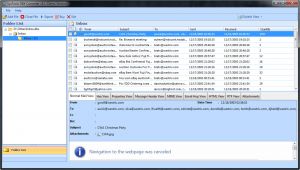 How to shut down Windows from Outlook
How to shut down Windows from Outlook
If you are like me, then you have probably forgotten to shut down your home computer after leaving for work way too many times. Fortunately, that's not such a big deal today, since there are many ways to remotely shut down your computer over the Internet, but deciding on which method to use can be quite a hassle. Often, work computers are locked, and you can't install anything that you want on them as certain applications might be seen as security threats.
Then why not use a program that is most certainly already installed on your system and that you likely use on a daily basis - the versatile Microsoft Outlook? Most companies use it as their default email client, and if you also use it at home, then turning off you computer without having to install other third-party tools should pose no problems.
Basically, to turn off your home computer using Outlook, you will have to tell Windows to launch "Shutdown.exe" by sending an email to your home PC. Here's how you do that.
Step 1
First, you will have to create a ".bat" file. All you have to do is open a text editor like Notepad and simply save the file with the ".bat" extension instead of the standard ".txt". You might also want to give it an easily recognizable name, like "shutdown.bat" and remember the location where you save it.
Save as .bat
Step 2
Paste the following command into your newly created ".bat" file:
%systemroot%\system32\shutdown.exe -s -t 0
This will tell Windows to immediately shut down your computer.
Shutdown Command
Step 3
Create Rule Item
Now that you have created your ".bat" file to tell Windows to turn off your PC, it's time to launch Outlook and create the rule that will allow you to remotely do that. First, go to the "Home" tab, click on the "Rules" icon and select "Manage Rules and Alerts".
Step 4
Create New Rule
A new window will appear where you need to select the "New Rule" option in the menu bar, as seen in the image below.
Step 5
Select Template
After the wizard pops up, make sure to select "Apply rule on messages I receive" as a template for your new rule, this way you will tell your home computer to shut down by itself when you send it a certain email message.
Step 6
Now it's time to set the conditions that will need to be met in order for the rule to be applied. This can be a bit confusing, but I will explain my choices and how to enforce them in order to avoid unwanted scenarios.
Step 6.1
Condition Selection
First, select the conditions your want to enforce by clicking on the checkbox next to each of them, as you can see in the photo below.
Here's why I've chosen these conditions:
- "with specific words in the subject" - this condition will tell the rule to activate only when the received email contains a specific word in the subject field. This condition is great for filtering out hundreds of emails that you might receive on a daily basis.
- "through the specified account" - this condition will allow you to choose which account the rule will apply to. This is great if you have multiple email accounts set up with Outlook.
- "send only to me" - this condition is pretty intuitive. It will make the rule be triggered only by the email messages sent to you, thus filtering out messages sent to groups. This and the "where my name is in the To box" will make sure that the email received is directed only to you.
- "with specific words in the body" - similar to the first condition, this one will trigger the rule only when a specific word is found in the body of the email, not only in its subject field.
Obviously, you can choose any other condition that suites your needs. This is only my selection for this guide.
Step 6.2
Now that you know how to choose conditions and what they do, it's time to set up parameters for each of the selected trigger events. You might have noticed that, in the bottom part of the window, after choosing your conditions, you are given the possibility to edit the conditions to provide trigger words, target accounts and other data that will make the rule active only in specific scenarios. All you have to do is click on the highlighted words and provide the required parameters. For example, after clicking on the "specific words" link for the subject area, a pop-up window will appear where you can easily set up the text that is required for this condition to pass.
Add Word to Subject
Step 7
After verifying that all the desired conditions are selected and the trigger events set (as stated before, you can view the rule description in the bottom of the window), click the "Next" button.
Step 8
Now it is the time to decide what happens when you receive an email message with all the conditions met. Simply select the "start application" and "delete it" actions from the following list.
Actions
While the "start application" option is pretty obvious, you might wonder why I have also selected the "delete it" action. Well, imagine that every time you start Outlook, and the email message is in your inbox, the computer will shut itself down. That's not what you might want, so deleting the email messages after it is received (and the rule activated) will simply turn off you system and make the email dissapear.
Just like when you were choosing your conditions for the rule, you will also have to click on the "application" link and provide the path to your ".bat" file that we have created in the beginning of this tutorial in order to tell you computer to shut down.
Step 9
Exceptions Window
Once you have done all that, click on the next button to get to the "exceptions" window which you can completely ignore. However, if you want to set up some exceptions you are more than welcomed to do that. The process is the same as setting the conditions.
Step 10
Last Step
The last step you have to take is naming your rule for future references and turn it on.
How to actually trigger the shut down event
Now that you have your rule created, turned on and ready to be used, you might want to know what you need to actually do in order to remotely shut down your computer. Just create a new email message with a specific subject and body that will trigger the conditions set up by you and send it to the account that you have chosen when creating the rule. If the target computer is on, and Outlook is running, then it will automatically shut down the moment your email message is received. Simple, right?
If you have any additional questions or suggestions, feel free to leave me a message in the comment section below.





Comments
Subscribe to comments